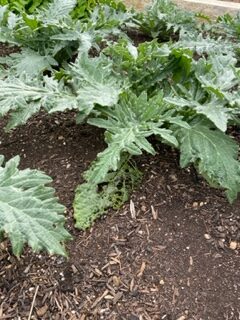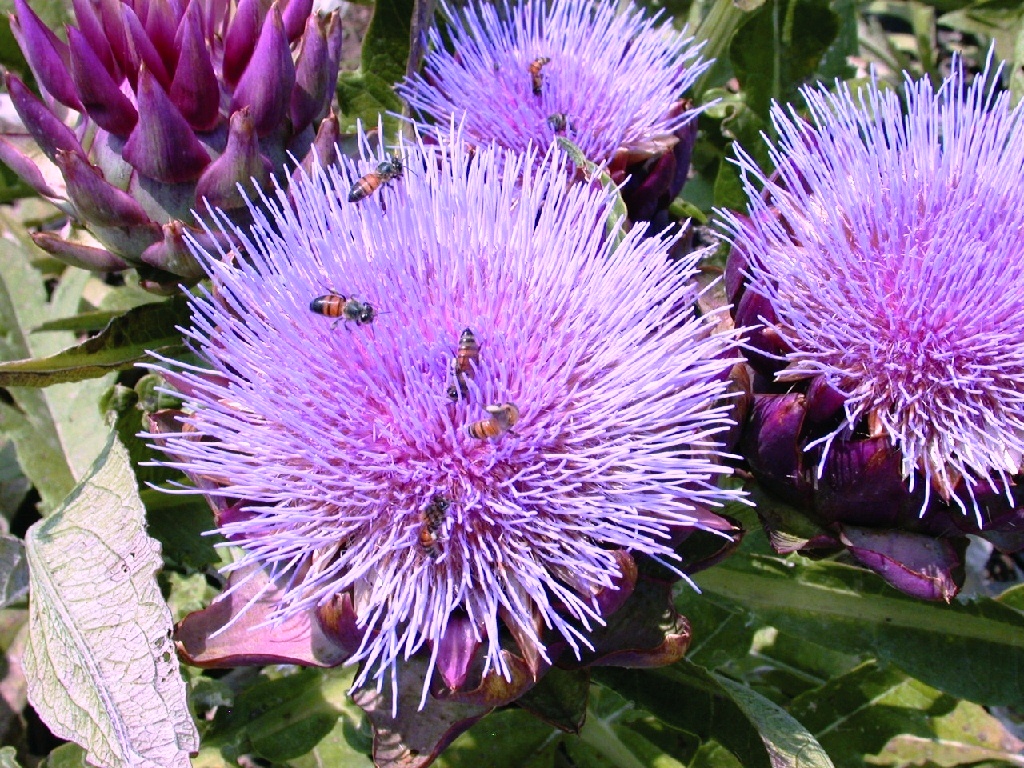By Peggy Qualls, Bexar County Master Gardener
April 2023

It is easy for me to get excited about almost any plant in the Culinary Garden at SABOT, but the one that I find most fascinating is the Artichoke. It is a member of the thistle family and looks like a monster version of the thistles we see in fields and roadways all over Texas during the summer. The difference between thistles that grow wild in Texas and the artichoke is that the artichoke is a wonderful, tasty vegetable filled with nutrients. As an added bonus, in Zone 8, it can be treated as a perennial.
GROWING ARTICHOKES
According to Texas A&M AgriLife Extension, early planning for artichokes in Central Texas requires planting your seeds indoors or in a protected area in mid-August for transplanting outdoors in mid-October.
Artichokes need room as they can reach 3 feet in height and width. The flowers grow up to 7 inches in diameter and have a beautiful blue to lavender color. Here are some tips for successfully growing artichokes:
- Plant them in deep, fertile, well-drained soil and avoid sandy soils with excess drainage.
- Keep the soil consistently moist as artichokes can suffer from black tip when fruiting in sunny, warm and windy conditions.
- Watch for diseases such as powdery mildew, Verticillium wilt, curly dwarf virus, bacterial crown rot and botrytis rot, which can emerge with rainy weather.
- Similar to many other vegetables, artichokes can also fall prey to spider mites and aphids.
- Leave plenty of space between plants which helps to dry them out and reduce chances for these issues to develop.

A healthy plant should produce 6 to 9 buds usually in April and May. If the old stems are removed after cutting the buds, it will allow new stems to grow. Because the artichoke is a perennial, it should be cut back to ground level. This places the plant into a dormant state for the summer and allows it to grow new shoots in the fall. These shoots can be transplanted for new plants.
For Texas gardeners, there is a healthy assortment of artichoke varieties to choose from, including:
- Green Globe
- Imperial Star
- Harmony
- Emerald
- Purple Sicilian
The new plant in the Culinary Garden at the San Antonio Botanical Garden is called Colorado Star, and I am eager to see it bloom.
COOKING & EATING ARTICHOKES
Cooking and eating an artichoke is an adventure. They can be steamed, boiled, grilled, braised or stuffed. They can be eaten hot or cold and can be coated in everything from butter to dips. You can include artichokes in every recipe imaginable.
For example, as summer comes around, adding artichokes to a cold pasta salad on a hot day makes for a tasty meal. As an added bonus, they are considered a low calorie, high fiber super food that is chock full of folate, vitamins C and K, magnesium, phosphorus, potassium, and iron.
I can’t think of a better reason to grow such a great plant, can you?
